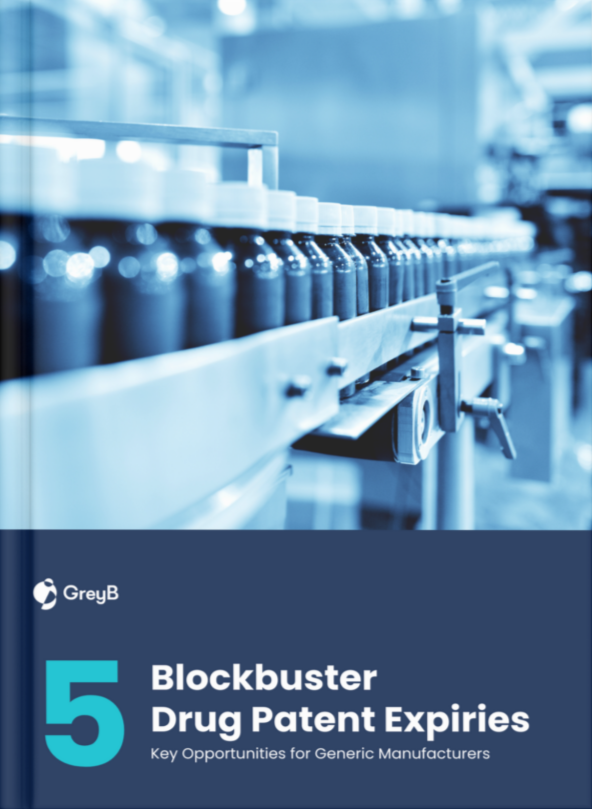Kisqali is a drug owned by Novartis Pharmaceuticals Corp. It is protected by 10 US drug patents filed from 2017 to 2025 out of which none have expired yet. Kisqali's patents have been open to challenges since 13 March, 2021. Based on its patents and exclusivities, its generic launch date is estimated to be Apr 14, 2036. Details of Kisqali's patents and their expiration are given in the table below.
| Drug Patent Number | Drug Patent Title | Drug Patent Expiry | Status |
|---|---|---|---|
| These drug patents protect the active ingredient(API) of the drug. Only drug patent owner can launch products that use this active ingredient until these patents expire. | |||
| US9193732 | Salt(s) of 7-cyclopentyl-2-(5-piperazin-1-yl-pyridin-2-ylamino)-7H-pyrrolo[2,3-D]pyrimidine-6-carboxylic acid dimethylamide and processes of making thereof |
Nov, 2031
(5 years from now) | Active |
| US8415355 | Pyrrolopyrimidine compounds and their uses |
Mar, 2031
(5 years from now) | Active |
| US8685980 | Pyrrolopyrimidine compounds and their uses |
May, 2030
(4 years from now) | Active |
| US8324225 | Pyrrolopyrimidine compounds and their uses |
Jun, 2028
(2 years from now) | Active |
| These drug patents focus on the other aspects of the drug like dosage, mode of administration (oral, tablet, capsules, liquids etc). | |||
| US10799506 | Ribociclib tablet |
Apr, 2036
(10 years from now) | Active |
| US12064434 | Ribociclib tablet |
Apr, 2036
(10 years from now) | Active |
| US12419894 | NA |
Apr, 2036
(10 years from now) | Active |
| US9868739 | Salt(s) of 7-cyclopentyl-2-(5-piperazin-1-yl-pyridin-2-ylamino)-7H-pyrrolo[2,3-d]pyrimidine-6-carboxylic acid dimethylamide and processes of making thereof |
Nov, 2031
(5 years from now) | Active |
| US8962630 | Pyrrolopyrimidine compounds and their uses |
Dec, 2029
(3 years from now) | Active |
| US9416136 | Pyrrolopyrimidine compounds and their uses |
Aug, 2029
(3 years from now) | Active |
A patent's expiry date may change depending upon legal activities going on that patent. Critical
activities like
abandoning of a patent, term extension of a patent or amendment of its claims can increase or decrease
the life of a
patent hence affecting its expiry date and in turn affecting the generic launch date of that drug.
Tracking these
ongoing activities on a patent application helps to keep an eye on the latest developments in the
patent process of
the drug which can give an idea of how early a drug's generic could be available. The next section
provides a list of
recent legal activities on Kisqali's patents.
Latest Legal Activities on Kisqali's Patents
Given below is the list of recent legal activities going on the following patents of Kisqali.
| Activity | Date | Patent Number |
|---|---|---|
 | ||
| Payment of Maintenance Fee, 12th Year, Large Entity | 22 May, 2024 | US8324225 |
| Payment of Maintenance Fee, 4th Year, Large Entity | 27 Mar, 2024 | US10799506 |
| Payment of Maintenance Fee, 8th Year, Large Entity | 31 Jan, 2024 | US9416136 |
| Payment of Maintenance Fee, 8th Year, Large Entity | 10 May, 2023 | US9193732 |
| Payment of Maintenance Fee, 8th Year, Large Entity | 10 Aug, 2022 | US8962630 |
| Patent Term Extension Certificate
Critical | 27 Apr, 2022 | US8415355 |
| Notice of Final Determination -Eligible | 18 Mar, 2022 | US8415355 |
| Withdrawal of Application for PTE
Critical | 17 Mar, 2022 | US8324225 |
| Withdrawal of Application for PTE
Critical | 17 Mar, 2022 | US8685980 |
| Withdrawal of Application for PTE
Critical | 17 Mar, 2022 | US8962630 |
FDA has granted several exclusivities to Kisqali. Till the time
these exclusivities
are active, no other company can market a generic or bioequivalent version of Kisqali, regardless of the status of it's patents. These exclusivities hence play a crucial role in
delaying the generic
launch. Given below are details of the exclusivities granted to
Kisqali.
Exclusivity Information
Kisqali holds 5 exclusivities out of which 4 have expired. Its last outstanding exclusivity is set to expire in 2027. Details of Kisqali's exclusivity codes and their expiration dates are given below.
| Drug Exclusivity | Drug Exclusivity Expiration |
|---|---|
| New Indication(I-783) | Jul 18, 2021 |
| New Indication(I-784) | Jul 18, 2021 |
| New Chemical Entity Exclusivity(NCE) | Mar 13, 2022 |
| New Patient Population(NPP) | Dec 10, 2024 |
| New Indication(I-950) | Sep 17, 2027 |
US patents provide insights into the exclusivity only within the United States, but
Kisqali is protected by patents in multiple countries.
Understanding
the full scope
of patent protection is crucial in strategizing market entry. By looking at the broader patent
landscape, you can
identify markets with weaker patent protection which could be ideal generic entry points. The
following section offers
details on Kisqali's family patents as well as insights into
ongoing legal events
on those patents.
Kisqali's Family Patents

Explore Our Curated Drug Screens
Generic Launch
Generic Release Date:
Kisqali's generic launch date based on the last expiry date of its patents and exclusivities combined is estimated to be Apr 14, 2036 (This date is subject to change depending upon the patent filing activities by the drug owner or exclusivity additions to its drug application)
Kisqali Generics:
There are no approved generic versions for Kisqali as of now.
How can I launch a generic of Kisqali before its drug patent expiration? :
You can seek FDA approval to launch a generic drug before the expiration of Kisqali's patents related by providing a 'paragraph IV certification' in your application, which states that the patent submitted by the Kisqali's sponsor is invalid, unenforceable, or will not be infringed by your generic product.
Given below are the details of the already filed Para IV certificates on Kisqali -
| Strength | Submission Date | ANDA(s) Filed | First applicant approval | Last patent expiry | 180 day status |
|---|---|---|---|---|---|
| 200 mg | 15 Mar, 2021 | 4 | 14 Apr, 2036 |
Alternative Brands for Kisqali
Kisqali which is used for treating HR-positive, HER2-negative advanced or metastatic breast cancer in combination with other endocrine-based therapies., has several other brand drugs using the same active ingredient (Ribociclib Succinate). Given below is the list of those companies and their brand drugs, to help you identify new opportunities, assess competitors, and plan your market strategies more effectively.
| Drug Owner | Drug Name | |
|---|---|---|
| Novartis |
|
About Kisqali
Kisqali is a drug owned by Novartis Pharmaceuticals Corp. It is used for treating HR-positive, HER2-negative advanced or metastatic breast cancer in combination with other endocrine-based therapies. Kisqali uses Ribociclib Succinate as an active ingredient. Kisqali was launched by Novartis in 2017.
Approval Date:
Kisqali was approved by FDA for market use on 13 March, 2017.
NCE-1 date:
NCE-1 date also known as the four year date occurs four years after the original drug approval and marks the first opportunity for a generic manufacturer to file an ANDA with a Paragraph IV certification. This is the earliest point when generic competition might begin, provided the challenge is successful. Since the approval date for Kisqali is 13 March, 2017, its NCE-1 date is estimated to be 13 March, 2021.
Active Ingredient:
Kisqali uses Ribociclib Succinate as the active ingredient. Check out other Drugs and Companies using Ribociclib Succinate ingredient
Treatment:
Kisqali is used for treating HR-positive, HER2-negative advanced or metastatic breast cancer in combination with other endocrine-based therapies.
Dosage:
Kisqali is available in tablet form for oral use. Given below is detailed information on Dosage -
| Strength | Dosage Form | Availability | Application Pathway |
|---|---|---|---|
| EQ 200MG BASE | TABLET | Prescription | ORAL |

